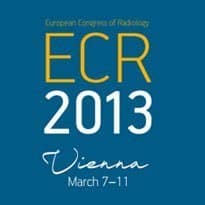Reports interrogated at ECR 2013
- 11 March 2013

Novel IT tools can make a positive contribution to efficiency in the radiology department – but good human communication is needed too, a session at ECR 2013 in Vienna heard.
Dr Neelam Dugar, consultant radiologist at Doncaster Royal Infirmary, and former chair of the UK Imaging Informatics Group, said: “IT can do so much but sometimes you have to go back to being a human being and communicate verbally.”
She said it was often necessary to talk to the referring clinician and also, critically, to make sure that parts of the electronic radiology report are available for radiologists to write a narrative on their findings.
The extent to which radiology reports can be structured, and therefore easier to analyse, made for lively debate at ECR.
Dr Dugar said: “It [structured reporting] exists already in areas such as obstetric ultrasound but when you get into more complex issues, where you are giving an opinion, medicine is not maths! Radiology reports are opinions.”
It was vital that radiologists acted as doctors, not as technicians, she said.
In a presentation on improving quality and efficiency of reporting by structure and templates, Dr Dugar made the case for the adoption of the CDA (Clinical Document Architecture) standard that supports the need for narrative within the radiology report but also supports data mining.
CDA is also transferable to other documents and therefore paves the way for an integrated record with radiology reports and images integrated with other clinical documentation.
“I believe we will see that death of picture archiving and communications as we see the inclusion of images into the electronic patient records,” she said.
The standards that facilitate this integrated patient-centric record are XDS (Cross-enterprise document sharing) and XDS-I (Cross-enterprise document sharing for images) are already being adopted by some manufacturers which is reassuring, Dr Dugar added.
She hoped lessons would be learned from PACS – which was made possible by implementation of the DICOM standard – and that the new emerging standards would be used.
Forms and other paper records had produced a high standard of clinical communication which should not be compromised as records become electronic.
“We must not let IT undermine high clinical standards,” she emphasised. A fellow speaker in the session, Dr Peter Mildenberger, head of radiology at Mainz University, Germany, agreed: “We should have more structured documents which allow you to put in narrative if necessary.”
Dr Neelam Dugar is interviewed in this week’s Insight.




